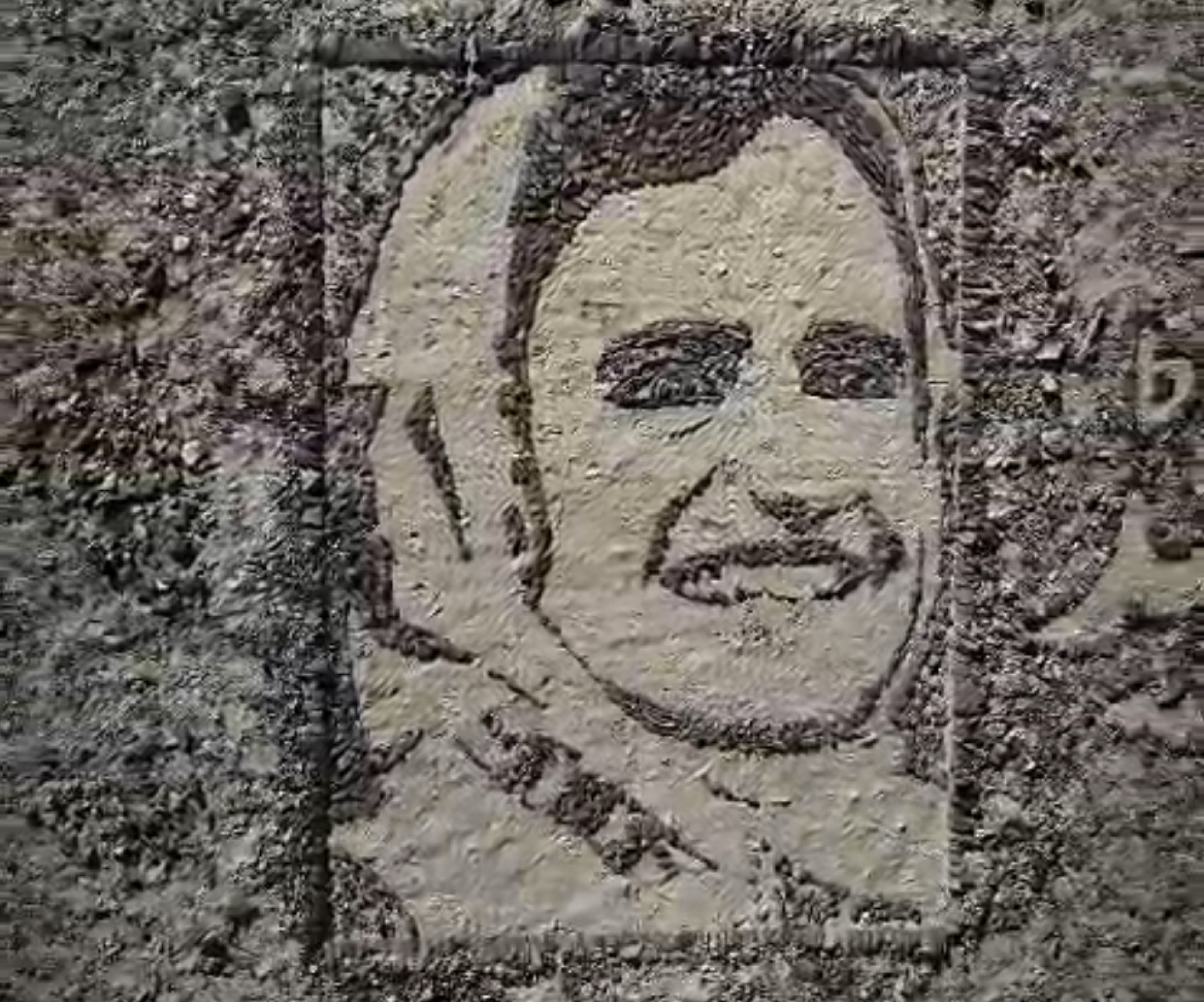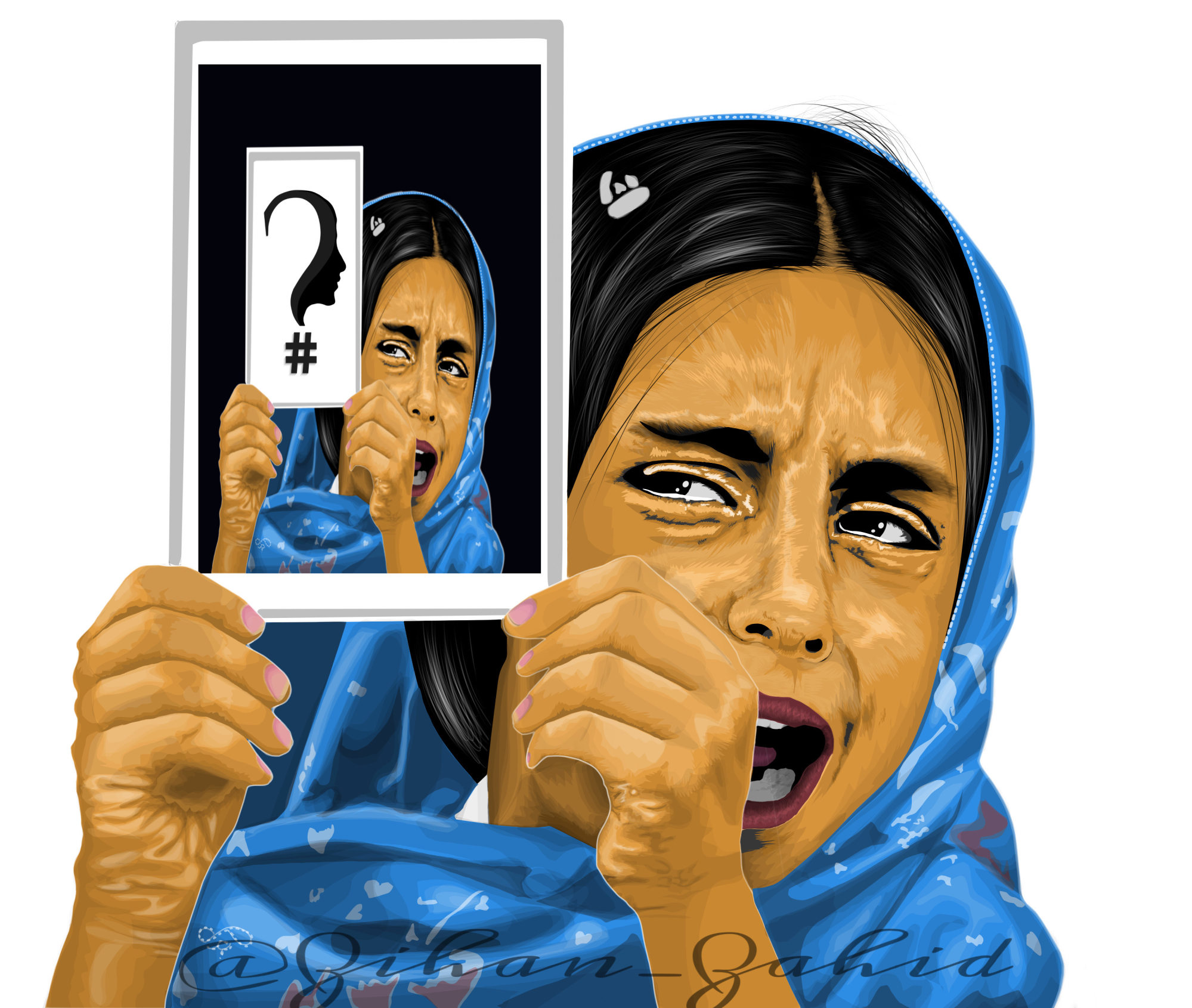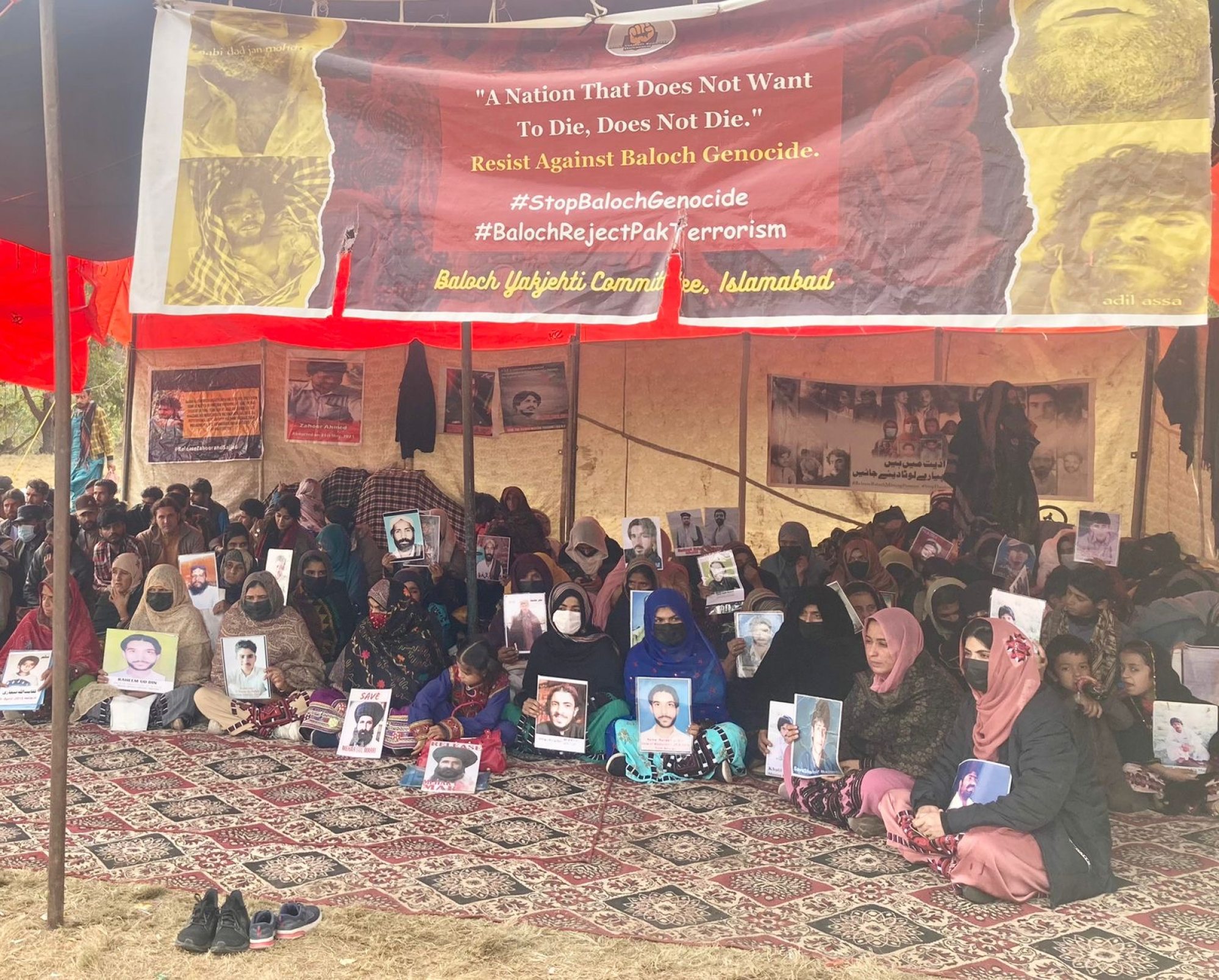Women from Pakistan’s Balochistan province hailed in artworks for their sacrifices amid insurgency
[ad_1]
“This painting unveils a conversation that spans three generations of women. My artwork strives to contribute to a deeper understanding of the connections between art, activism, and the resilient narratives of Baloch women,” 34-year-old Sakeena told This Week In Asia.
Latest Pakistan terror attack casts light on growing cost of Chinese investment
Latest Pakistan terror attack casts light on growing cost of Chinese investment
Works by Baloch artists were showcased at an exhibition in Karachi last week to commemorate 37-year-old Karima Baloch, a Baloch human rights activist who was found dead in Toronto, Canada in 2021. Karima’s family has alleged that she was killed because of her activism.
Artist Zihan Zahid, 24, portrayed a young girl holding a photo of a missing person in a digital creation that captures the heartbreak faced by families whose loved ones have disappeared. Another piece by Zahid shows a woman sitting on a page of Pakistan’s constitution that guarantees fundamental human rights to its citizens while holding a picture of a loved one.
“These not only provide an identity to Baloch women but also convey [their] untold stories that can be interpreted from various perspectives,” Zahid said.
The exhibition was held weeks after more than 200 Baloch women marched 860km from the provincial capital of Quetta to Islamabad to seek answers from the government about their family members who had disappeared. The protesters alleged that their family members were killed by state forces. The march was sparked by the killing of a 24-year-old Baloch man.

Farhaz Naseem Baloch, a 23-year-old artist, used the medium of stone to illustrate the unbreakable spirit of Baloch women. He created a stone portrait of activist Mahrang Baloch, who was arrested by police during the march but was later released.
“I want to use my art to lend a voice to the struggle and resistance of Baloch women since they have sacrificed a lot for society. As stones can endure any weather, Baloch women can resist any force and move forward,” Naseem Baloch said.
One such woman who epitomised this spirit is 25-year-old woman activist Sammi Deen Baloch, who also took part in the march.
Deen Baloch said she was only 10 years old when her father, Deen Muhammad Baloch, a political activist and a government-employed doctor, was picked up by Pakistani intelligence personnel in 2009. Since then, she has not heard from him or his whereabouts.

“As women, we find it crucial to resist and voice our demand for the release of our men from their illegal detention,” Deen Baloch said. “The state has left us with no option but to resist and advocate for our people.”
While Deen Baloch acknowledged that several Pakistani artists had created works that represented the anguish and sacrifices of Baloch women, she called for greater involvement from other creative industries ranging from film to music to tackle the subject.
“Baloch women have made significant sacrifices, leaving their homes, disrupting their education and abandoning personal dreams, but these are not highlighted enough in art,” said Deen Baloch.
Among them was an attack last August against a convoy of Chinese engineers who were travelling in four bulletproof vehicles while they were on their way to Gwadar Port in Balochistan.
China, Pakistan to hold Arabian Sea joint military drills in November
China, Pakistan to hold Arabian Sea joint military drills in November
Many Pakistanis, such as Sakeena, have accused authorities of ignoring the economic deprivation suffered by the women of Balochistan caused by the CPEC projects.
In a painting titled Broadcasting Dreams, Sakeena illustrated a woman who offers an empty plate to her hungry children with two imaginary fish. The creation symbolises the helplessness of Balochi women, who were unable to fish in their regional sea to feed their families because of a CPEC project.
“The struggle depicted in this artwork extends beyond the mere absence of physical nourishment. It becomes a symbolic representation of denied aspirations and thwarted dreams,” Sakeena added.

Karachi-based artist Isma Gul Hasan, 29, chose posters to portray the determination and struggles of Baloch women.
In one poster designed for the annual “Aurat Azadi” march, or Women’s Freedom march, in Pakistan that took place on the occasion of International Women’s Day in 2021, Hasan depicted three Baloch women dressed in their traditional dress standing tall and gazing unflinchingly into the distance.
Baloch women have been ignored by mass media and art can play an important role in amplifying their narratives, Hasan said.
“I wanted to depict the women of Balochistan in a way that centered their voice and highlighted their struggle against years and years of injustice and gaslighting by the state,” she added.
[ad_2]
Source link

